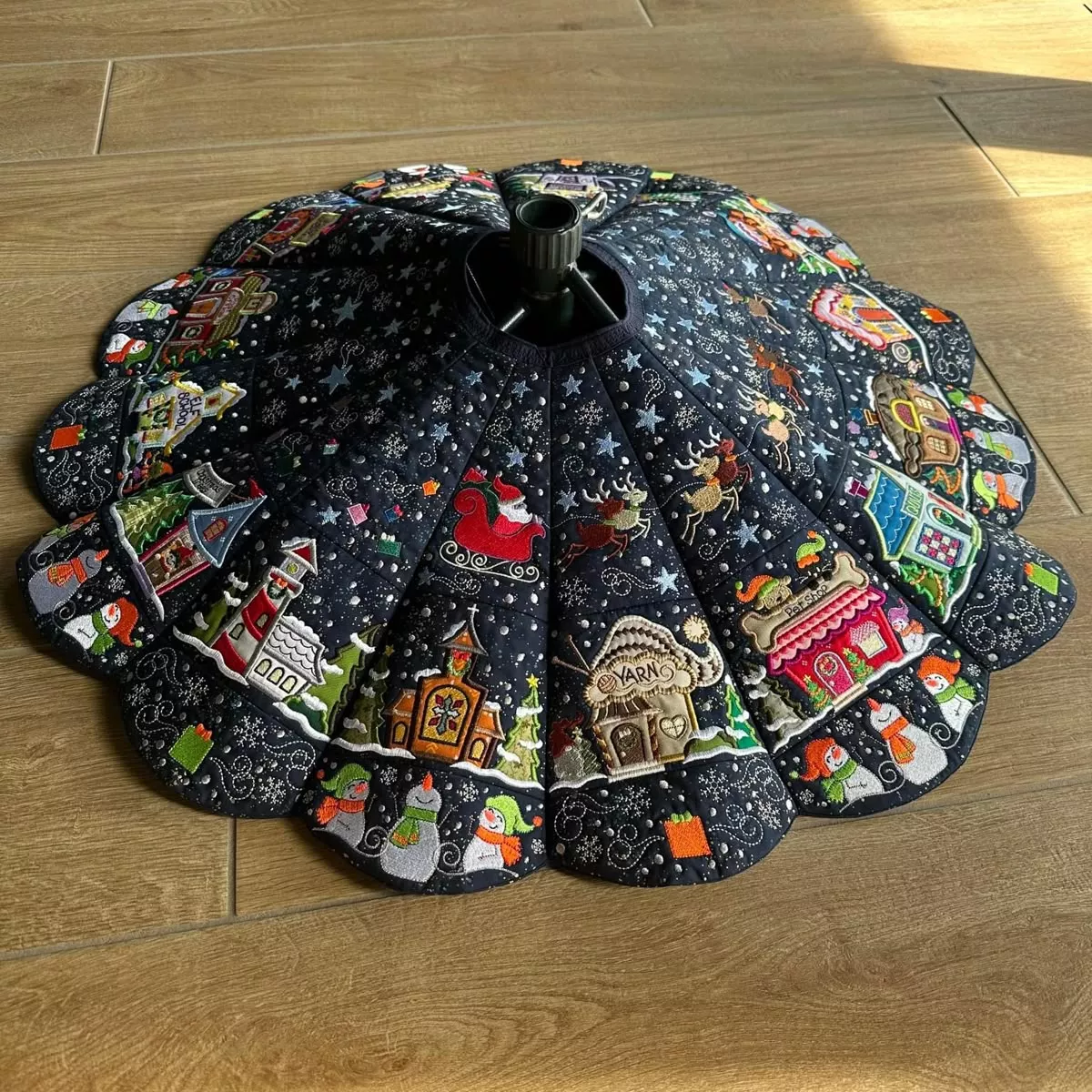
Quilted Christmas Tree Skirt
Finished size (suggested): 40–48″ diameter, 4–6″ center hole
Wedges: 12 wedges @ 30° each (or 16 wedges @ 22.5° each)
You need 12 wedges of this shape to make a full circle (or use 16 wedges at 22.5°).
advertising
Method B (alternative): Sew all front wedges together first, make one front circle with a slit and center hole, then layer over one large batting/backing piece, quilt the whole skirt at once. Trim edges.